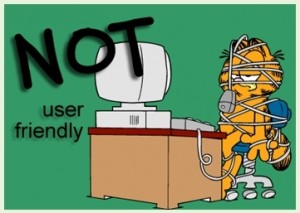Software product may fail: it can enter the market and get lost among the competitors. It may happen that the product will stay outside the main business and bring its 10 cents hardly paying back the maintenance efforts. It may also happen that the software will boost the market, killing the competitors by the burst wave and get a toehold in the tops.
In this series of articles I would like to cover 10 characteristics which, to my opinion, follow each successful software product whether it is Facebook, Kaspersky antivirus or Angry Birds.
Brief overview of previous series:
1. Your product is intended for specific people.
2. Your product helps people hit the target.
3. Your product solves a specific task.
4. Your product is very powerful but easy to learn.
5. Your product does what user expects
To make it clearer what I mean, let me give an example. Once upon a time, I investigated one famous (but not ours) software for reports building. Using OEM software for building templates, I spent some time to position tables and charts, indicated what fields from the tables must be in a table and from what data source the data must be taken.
In result, after half an hour work with not very handy UI (comparing to ours, of course!), I decided to see what I built. I pressed the Preview button hoping to see fruits of my labours… You can’t imagine how many bad words I said when instead of a report I saw an empty white paper and the designer window closed even without asking if I wanted to save my template! All my attempts to find the template failed! So, by pressing the Preview button I permanently lost all unsaved changes.

Of course, one can say that I could save my work oftener, that I must understand what the button I press does and say other things like “it’s your fault”. But you know, a user never likes feeling like a fool even when s/he deserves ![]() . So, since then I never wanted to use that software again.
. So, since then I never wanted to use that software again.
So, the point of this long example is that you may have a wonderful product, fantastic interface and unique functionality. But if clicking Ctrl+S your customer will get a Help window instead of customary saving of a document feature, most of your users will delete your designer after they will get the best hated “Need Help?” window 10 times in 3 minutes.
And this is not only about user interface. For example, when a document is printed, the designer can put some extra info on a page (like earlier versions of Internet Explorer or Notepad for Windows). And I even don’t mention automatically changed size of an image when you attach a file to an email!
To my opinion, there is a good criterion for cases when software does something different from what a user expects. In this case, you will for sure see the following sentence among the feedbacks: “the product functions in a strange way”. So, if the “strange” word appears in the feedbacks you get, act immediately! If a product functions strange, I doubt I would want to use it for long time. Only if I don’t have choice. But in this case, antimonopoly service will sooner or later enter the game.
Make your product user-friendly and intuitive. It is one of the main ingredients of success!
10 characteristics of a successful software product (characteristic #5: user-friendliness)
Mikhail Payson
July 3rd, 2012
No Comments »